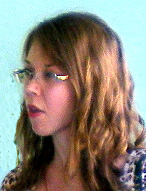
Buddhists running short of monks

By EMILY WATSON
Three-fourths of the Vietnamese-Americans in Little Saigon practice Mahayana Buddhism, but monastic life is attracting fewer and fewer youthful novices, according to Thich (Venerable) An Minh a senior cleric. “Nowadays men join monasteries not as youngsters anymore but between the ages of 40 and 60; rarely are novices younger than 30,” said An Minh, also known as Tony Lam, adding that he himself was 14 when he became a monk.
Mahayana (Great Vehicle) Buddhism is the larger of the two major branches of this world religion. It predominates in Vietnam, China, Japan and Korea. On the other hand, Theravada (Lesser Vehicle) Buddhism, which is older, is the principal faith of Cambodia, Laos, Thailand, Myanmar (Burma), Sri Lanka and some regions in the southernmost part of Vietnam.
.jpg)
Photo Quy V. Ly
"Chua Duoc Su" Temple in Garden Grove, California
Speaking of the huge Vietnamese community of Westminster in Orange County, Thich An Minh said, “There is probably a temple on every (street) corner in Little Saigon.” He explained that these temples generally try to uphold the purity of doctrine, which has been damaged in many monasteries in South Vietnam under the pressure of the Communist regime since its takeover in 1975.
Buddhist houses of worship in the United States are funded by members’ contributions and particularly payments for intercessory prayers, according to Thich An Minh, one of eight clerics at the Dieu Phap Temple in San Gabriel, Cal. His congregation has 400-500 members, including 10-15 Anglo-American and African-American converts. “One of the monks is an African-American,” he related.
“Funerals are a major source of income,” he went on. “We conduct four or five of these ceremonies per week.” Thich An Minh added that as a rule the deceased person’s next of kin donate $20 per page of every prayer chanted on these occasions. “What are you praying for?” we asked this monk. “ He replied, “We pray that the person who died will soon become like the Buddha;” in other words that he or she will soon be released from the cycle of reincarnations and enter the Nirvana, a heaven-like state of perfection where happiness abounds.
Thich An Minh said that prayers are also requested for the living. “They normally ask for good health.”
“But Buddhists do not generally believe in a Creator-God; so to whom do you pray?” we wanted to know. “We pray, kind of, to the Buddha,” he answered.
He was referring to Siddhārtha Gautama (563 to 483 BC), the founder of this faith. He was an Indian prince who abandoned his life of wealth in search of a way to alleviate the world’s suffering.
In the two and a half millennia since his death, Gautama’s followers have been venerating him as the supreme Buddha, or the “Enlightened One.” The Buddha is believed to be able to guide his followers on the path to freedom from suffering. Ultimately Buddhists strive to reach enlightenment themselves and thus become “Buddhas,” who are no longer subject to the cycles of rebirth.
The distinct tenets of the Mahayana doctrine hold that all beings could be liberated from suffering, hence the term, "great vehicle.” This is why this branch of Buddhism encourages vegetarianism, which monks and nuns practice, though not all laity. Mihn, a volunteer at Chủ Dược Sư the Vietnamese Buddhist Nuns Association of America in Westminster.
Stressing the Buddhist belief in reincarnation, she explained: “Maybe the animal (whose meat non-vegetarians eat -- ed.) has had some relationship with you in its past life…That animal might be your friend, or a family member.”
Eating or not eating meat will affect the karma of every human being, according to Thich An Minh, who was thus linking people’s fate in future lives to their level of compassion shown in their diet. He added that that some are not ready for vegetarianism. “If you can handle (vegetarian diet) a day, then do a day,” he said. “If you can handle five days, do five days. You slowly work on yourself. Buddhism is about training your body slowly because we’re not perfect yet.”
While faith in a personal God is not part of Buddhist doctrine, An Minh observed that some Vietnamese-American Buddhists do believe in him. In an interview, a Vietnamese scientist living in Orange County told us: “As I look at the universe, and as I study the microcosm I am working on in my scientific project, there is no way I can not believe in God. As since I do believe in God there is no way that I can not worship him.” One of this scientist’s relatives, a dentist, agreed in a private conversation: “Yes I do believe in a Creator. Still, I am a Buddhist.”
“These are personal beliefs,” said Thich An Minh. “They might be due to the influence of the surrounding Christian culture.” One-fourth of Vietnamese-Americans in Little Saigon is Christian, a higher proportion than in Vietnam itself, where 83 percent of the population are Buddhists. However, Thich An Minh stressed the peaceful coexistence between his coreligionists and Catholics and Protestants: “When there’s trouble within the Vietnamese community, both faiths come together to help each other out.”